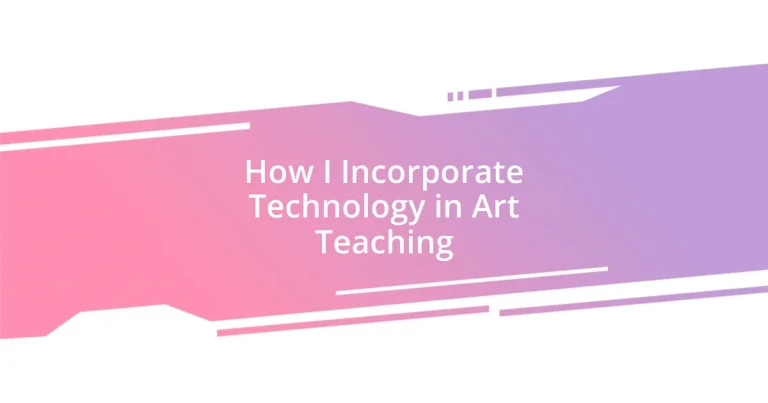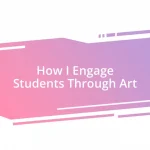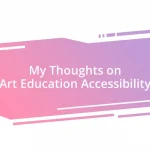Key takeaways:
- Integrating digital tools, such as tablets and online platforms, significantly enhances student creativity and confidence, facilitating deeper engagement in art education.
- Collaboration through technology, like virtual drawing sessions and online galleries, fosters community and diverse artistic perspectives among students.
- Using digital assessment methods, including peer evaluations and portfolios, allows for richer feedback and reflection on artistic growth, promoting a culture of appreciation within the classroom.
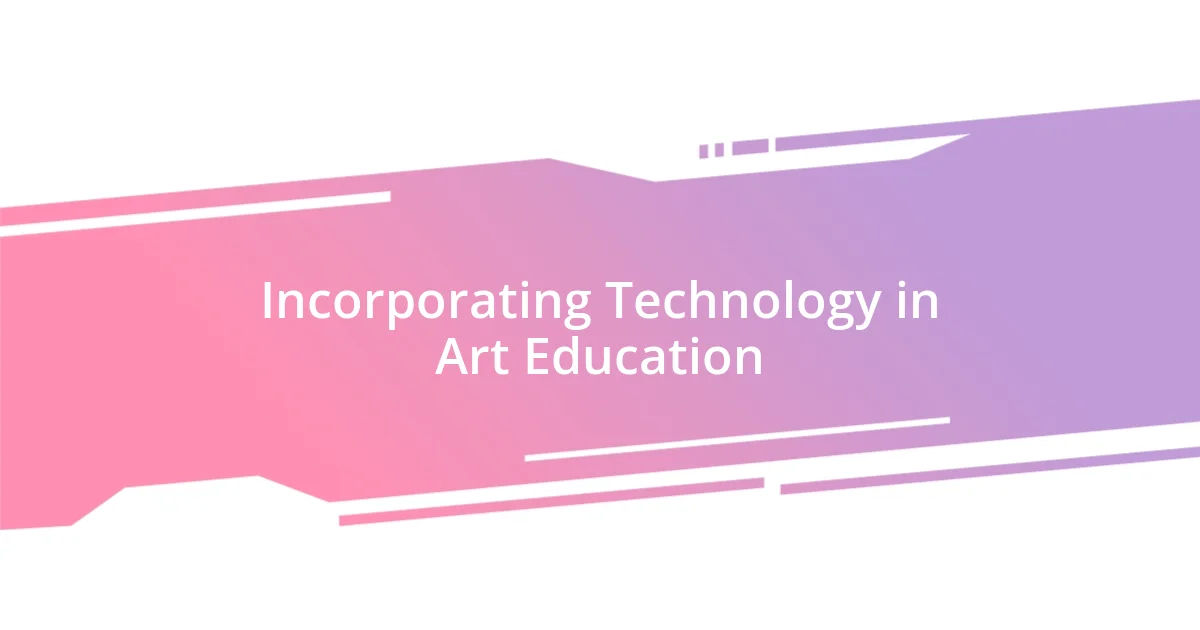
Incorporating Technology in Art Education
When I first introduced digital art tools in my classroom, I felt a palpable shift in the energy of my students. I remember one particular day when a shy student, usually hesitant to participate, created a stunning digital painting using a tablet and stylus. Seeing their eyes light up at the vibrant colors they could manipulate so effortlessly was a reminder of how technology can break down barriers and foster creativity.
Using software like Adobe Creative Suite or Procreate opens up a world of possibilities, allowing students to experiment without the mess and limitations of traditional materials. It’s fascinating to witness how they immerse themselves in the creative process, often losing track of time. Have you ever noticed how a simple tool can unleash an artist’s potential? Watching their confidence grow as they learn these new skills is genuinely rewarding.
Another element I find invaluable is the access to online galleries and platforms where students can showcase their work. I recall my class participating in a virtual art competition, and the thrill of seeing their pieces displayed alongside those from artists around the globe was indescribable. This not only expanded their perspective but also connected them with a broader artistic community, reinforcing the idea that art truly knows no boundaries.
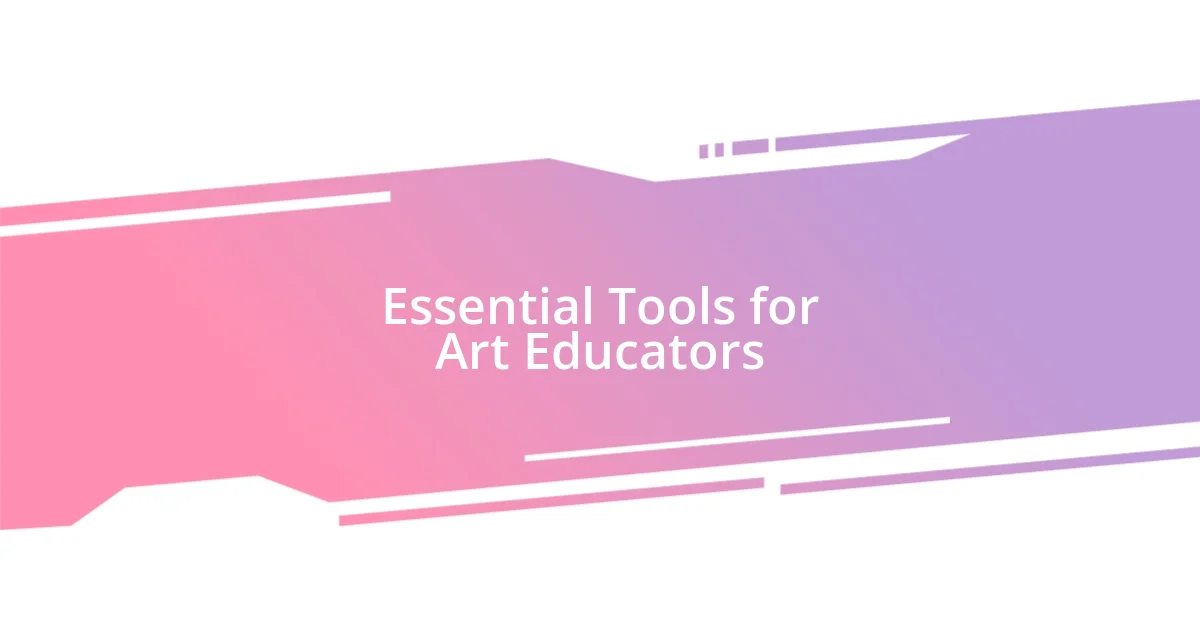
Essential Tools for Art Educators
For me, the essential tools are not just about technology but about enhancing the creative experience for students. A vibrant classroom thrives on a mix of traditional and digital tools. I’ve found that integrating both allows students to explore diverse media, encouraging them to discover their unique voice.
Here are some key tools I consider vital for art educators:
- Tablets and Styluses: Perfect for digital drawing, allowing for intuitive interaction with art software.
- Digital Projectors: Useful for large-scale demonstrations and presentations, making art discussions more engaging.
- Online Art Platforms: Websites like ArtStation and DeviantArt provide inspiration and a community for students to share their work.
- 3D Printing Pens: These enable students to experience three-dimensional creation in an accessible way, taking designs off the screen.
- Video Tutorials: YouTube and other platforms can offer step-by-step guidance, making complex techniques more approachable.
Connecting with students through these tools often leads to surprising moments. I once set up a virtual collaboration project, where students from different schools sketched a segment of a mural. Seeing them share ideas and unite their creativity was truly inspiring, and it underscored the profound impact of collaboration in art education. Each tool fosters interaction, building a creative dialogue that transcends traditional boundaries.
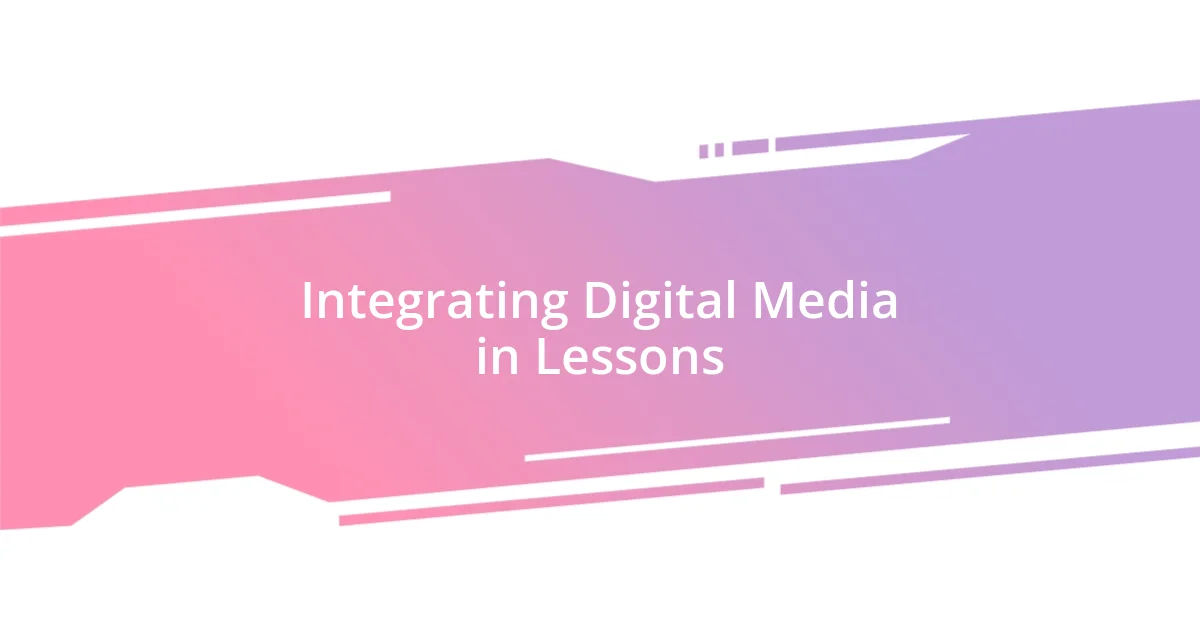
Integrating Digital Media in Lessons
Integrating digital media in lessons has transformed my approach to art education. One day, I decided to experiment with a virtual reality painting app in class. The excitement was contagious as students donned VR headsets and entered a digital canvas where they could create immersive 3D art. Watching them explore this new medium, I realized that digital media can make art feel limitless, inviting students to step right into their imagination.
I’ve also found that using social media platforms can be a fantastic way to connect art lessons with the outside world. For instance, during one project, I encouraged my students to share their artwork on Instagram with a specific hashtag. The feedback they received from a broader audience—friends, family, and even fellow artists—sparked their enthusiasm and validated their efforts in a way that few classroom critiques could. This experience highlighted the powerful role of digital media in building an artist’s confidence, expanding their reach beyond the classroom walls.
Furthermore, I often incorporate interactive online tutorials into my lessons. One time, a student struggled with understanding color theory, so I shared a dynamic video tutorial that broke down the concepts visually. The next class, they approached me with a newfound understanding and excitement about experimenting with color in their own work. It reminded me that digital media not only enriches the learning experience but also caters to diverse learning styles, making art accessible to everyone.
| Digital Media Integration | Traditional Methods |
|---|---|
| Encourages exploration through interactive platforms | Often limited to physical materials |
| Immediate feedback from online communities | Feedback typically from peers and instructors |
| Diverse learning styles supported via video tutorials | Tends to follow a one-size-fits-all teaching approach |
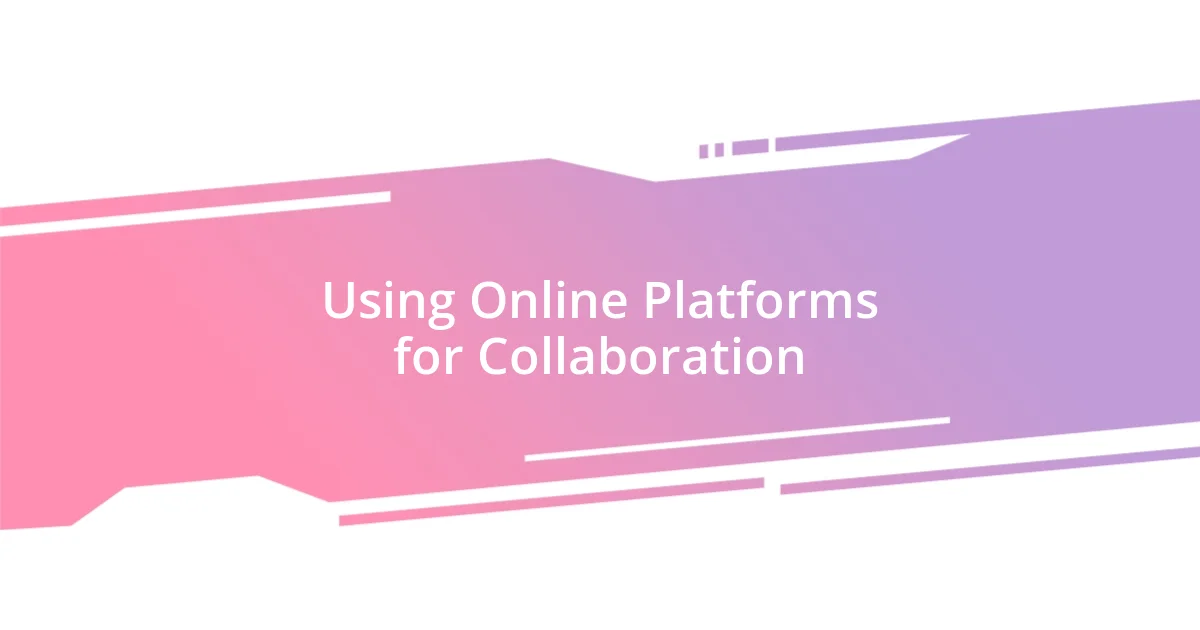
Using Online Platforms for Collaboration
Utilizing online platforms for collaboration has opened up a new world of possibilities in my art teaching experience. I remember the thrill of organizing a live drawing session on Zoom with students scattered across different cities. The blend of their artistic styles came together in real time, and the energy was electrifying. It made me realize how powerful it is for students to witness diverse artistic perspectives, all while forming connections and friendships that extend beyond physical classrooms.
When I first introduced a collaborative project using Google Slides, I was amazed at how quickly students adapted. They took ownership of their sections, adding images and comments that sparked lively discussions. One student even remarked how seeing their peers’ contributions inspired them to push their creative limits. It really struck me that technology not only facilitates teamwork but also fosters a sense of community. Have you ever seen a group of students find their voice together? The possibilities are endless when they can share freely online.
For me, the most memorable collaboration happened when I set up an online gallery showcase. Students submitted their artwork, which we then displayed in a virtual exhibit. The joy I saw in their faces as they invited family and friends to walk through their collection was heartwarming. They received numerous comments and encouragement, reinforcing their belief in their work. This experience left me pondering—how could we have created such an impactful moment without the use of online platforms? It’s clear that in today’s digital age, collaboration through technology enriches the artistic journey for both students and educators alike.
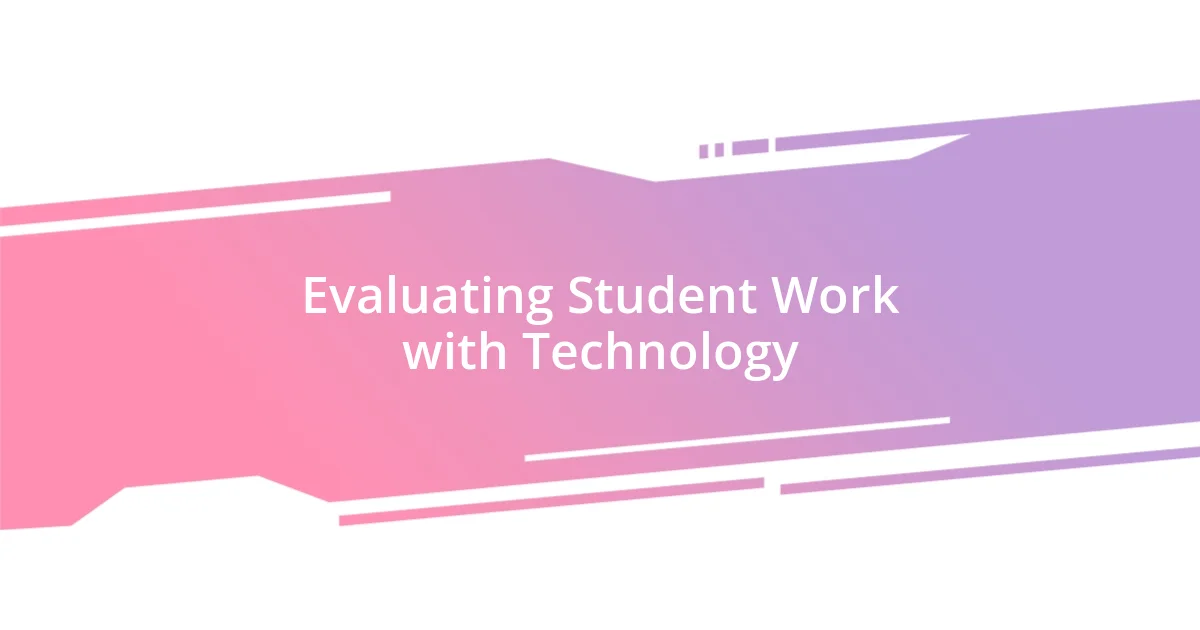
Evaluating Student Work with Technology
When it comes to evaluating student work with technology, I’ve discovered that digital tools can provide a more nuanced perspective than traditional methods. I remember the first time I introduced an online assessment platform that allowed students to submit and critique each other’s artwork. The immediacy of digital feedback sparked conversations I’d never seen in a classroom. Students were not just sharing their thoughts; they actually enjoyed the process of giving and receiving constructive criticism. Have you ever seen a shy student bloom when they realize their opinion matters? It was a remarkable moment for both me and them.
I also started using digital portfolios, which have transformed the way students reflect on their growth as artists. Watching them curate their work over time feels like witnessing an artist’s journey unfold. One student shared with me how reviewing their earlier pieces in the portfolio helped them identify specific areas for improvement and even set new goals. Moments like these remind me that technology doesn’t simply document their work; it becomes a living, evolving record of their artistic identity.
Incorporating peer evaluations through platforms like Padlet has been another eye-opener. It was fascinating to see how students engaged with one another’s work in a public forum. The transparency of the process encouraged more thoughtful critiques, prompting deeper discussions about artistic intent and technique. I can’t help but wonder—how often do we really pause to appreciate our peers’ perspectives? In my experience, technology not only facilitates evaluation but also fosters a culture of appreciation and growth within the classroom.












